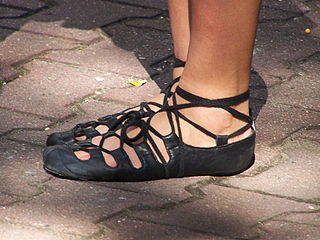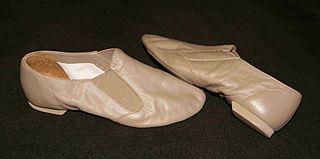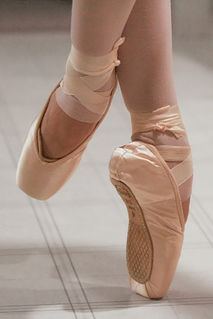 W
WA ballet shoe, or ballet slipper, is a lightweight shoe designed specifically for ballet dancing. It may be made from soft leather, canvas, or satin, and has flexible, thin full or split soles. Traditionally, women wear pink shoes and men wear white or black shoes. Skin colored slippers—which are unobtrusive and thus give the appearance of dancing barefoot—are worn in modern ballets and sometimes modern dancing by both men and women.
 W
WA dress shoe is a shoe to be worn at smart casual or more formal events. A dress shoe is typically contrasted to an athletic shoe.
 W
WA flamenco shoe is a type of shoe worn by flamenco dancers. They are typically worn by female dancers, they are called flamenco heel, often with traje de flamenca costumes. Male flamenco dancers traditionally wear short, heeled boots, although there are now some flamenco shoe styles available for men.
 W
WGhillies are specially designed shoes used for several types of dance. They are soft shoes, similar to ballet shoes. They are used by women in Irish dance, by men and women in Scottish country dance, and by men and women in Highland dance.
 W
WA jazz shoe is a type of shoe worn by dancers. They are used in jazz dance and other styles of dance including acro dance, acrobatic rock'n'roll, and hip hop, and in other activities, such as aerobics.
 W
WA pointe shoe is a type of shoe worn by ballet dancers when performing pointe work. Pointe shoes were conceived in response to the desire for dancers to appear weightless and sylph-like and have evolved to enable dancers to dance en pointe for extended periods of time. They are manufactured in a variety of colors, most commonly in shades of light pink.
 W
WTap dance is a type of dance characterised by using the sounds of metal taps affixed to the heel and toe of shoes striking the floor as a form of percussion, coupled with both characteristic and interpretative body movements. Its roots were in minstrel shows, it gained prominence in Vaudeville, then emerged into an art form and means of expression alongside the evolution of jazz.